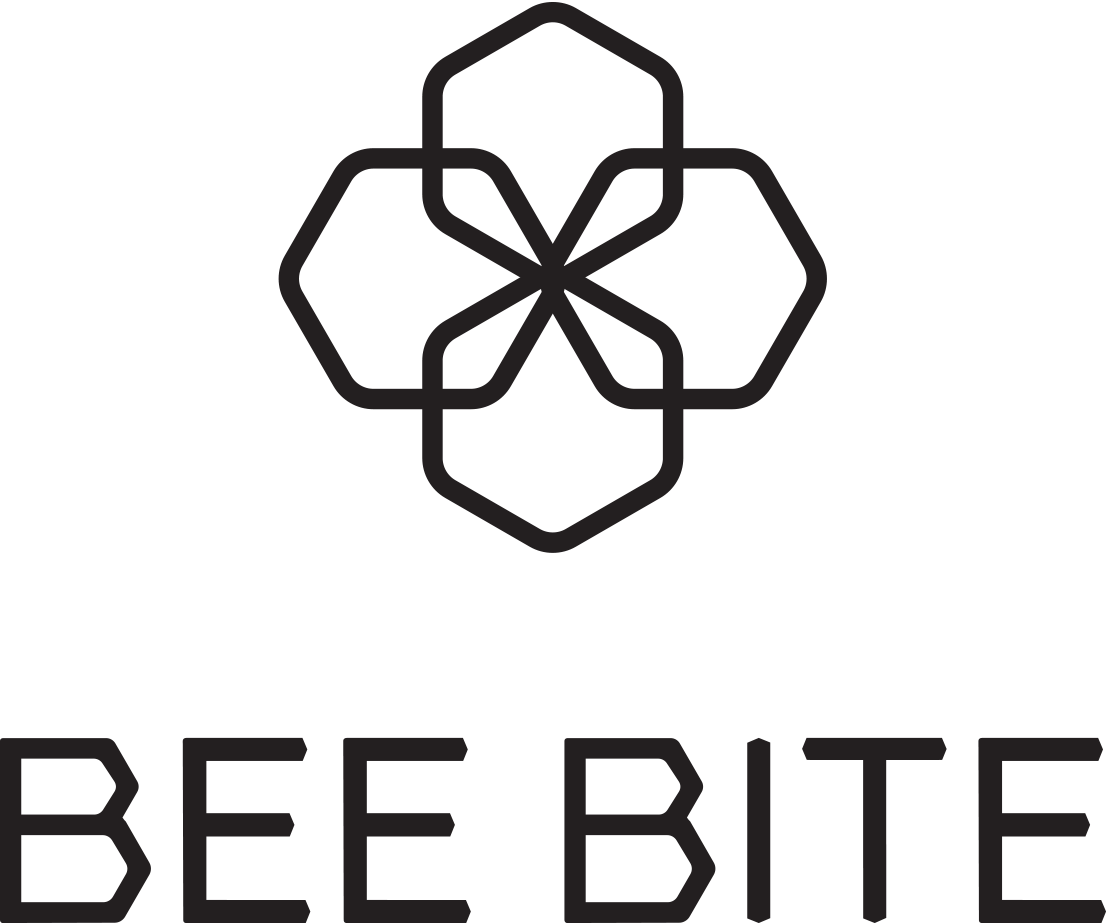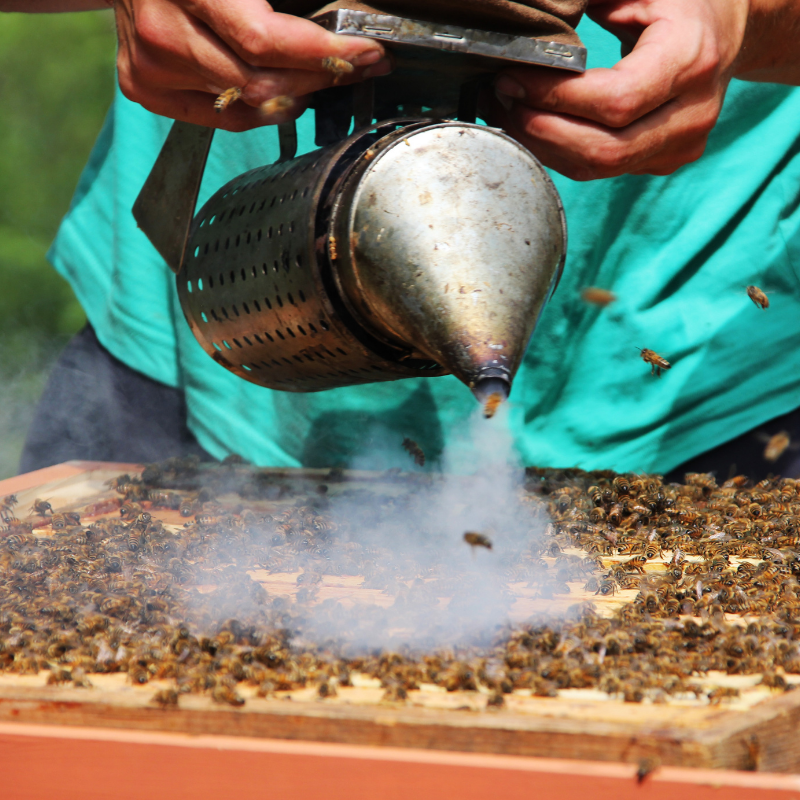HOW TO STRENGTHEN IMMUNITY WITH BEE BREAD AND HONEY PRODUCTS
During the last years, interest in natural, functional and healthier food products is rapidly increasing. More and more food industry companies attempt to find natural food sources with high nutritional value. Apiculture products such as pollen, honey, beebread, propolis and royal jelly become more popular every year. Nowadays, these products are considered a functional food, which increase nutritional value and have positive manner to physiological or psychological health of human beings.
More and more peolpe search for the highest quality products, preferably with health benefits, rich in vitamins, valuable bioelements, and nutrients. Therefore, bee bread that is rich in beneficial ingredients has proved to fulfil these expectations. It constitutes a wholesome, biologically active nutrient, which can be used in the food industry.
Bee bread is a product of the fermentation of a mixture of pollen, nectar and bee saliva that is inoculated by a wide range of bacteria and yeasts necessary for fermentation after storage in comb cells. Bee bread is regarded as the chief protein resource that bees can utilize, especially for feeding of larvae and adults. Since ancient times, bee bread has been used in different cultures for several nutritional and therapeutic purposes. (1, 2)

Graphical abstract from Shaden A.M. et all, Recent insights into chemical and pharmacological studies of bee bread, Trends in Food Science & Technology, 2020
Its significant number of bioactive compounds, carbohydrates, enzymes, vitamins, fatty acids, essential amino acids or carotenoids depends on bee pollen botanical and geographical origin. The variability of metabolites makes this product distinguishable from other bee products and usable in a wide range of medical and therapeutic applications.
Also, the composition of nutritional compounds (high amounts of lipids, proteins, carbohydrates) or minerals (Ca, Mg, Fe, Zn, Cu) indicates that pollen could be considered as valuable food and feed.
The studies of the past few years suggest that bee pollen biologically active substances—apigenin, quercetin, phenil acetic acid, caffeic acid, cinnamic acid, etc., can act as strong antimicrobial, antioxidant, anticarcinogenic, cardioprotective, hepatoprotective or detoxifying sources. Moreover, it is determined that daily use of this product can help to improve eye, skin, cardiovascular or colon functions. (3, 4)
Beebread is a product of lactic acid fermentation of bee collected pollen. This unique product distinguishes by higher nutritional value and better digestibility than bee pollen, because during the fermentation process, the walls of pollen cells are partly destructed.
According to scientific studies, the chemical composition of beebread is biochemically similar to pollen from which it was made. However, beebread contains more carbohydrates and enzymes, it is richer in content of vitamins K and B, but has less proteins and fats and shows lower pH values because of the lactic acid. (5, 6, 7)
Bee pollen distinguished from the other bee products by the highest content of Ca and Mg. (8)
Because of the composition of fatty acids in beebread and bee pollen and a variety of proteins present in pollen, these products are considered to be favorable for human nutrition and health.
This natural product owing to its biochemical diverse could be used for immunity system enhancement, regulation of digestive system function, antimicrobial, anti-aging and anti-anemic activities. Furthermore, it has a positive influence on functions of endocrine and nervous systems, tissue regeneration and elimination of various toxins forms. (9, 10, 11)
Bee bread has been shown to exhibit antimicrobial, antioxidant, antiradical, anticancer, and anti-inflammatory activities. The basic chemical components of bee bread include carbohydrates, proteins and vitamins, as well as minerals, fatty acids and other substances such as enzymes, natural antibiotics, antioxidants and hormones. Bee bread is considered to be a beneficial food supplement. In recent years, there has been significant interest in the use of bee bread to treat many illnesses. (12)
Supplementation of honey with other bee products, i.e. beebread, propolis, pollen, resulted in significant increase in the total phenolic and flavonoids contents, and in antiradical activity and reducing power, with the largest effect found for addition of beebread. (13)
The increasing interest in functional foods worldwide and the accelerating health awareness adds new demands to the future production of bee products. Bee bread encompasses the advantages of having both a) the unique chemical profile and b) the additional effect of microbial fermentation, contributing to its health and nutritional values. Bee bread is easily absorbed and metabolized and provides several macro and micro-nutrients for the human body, for example its enrichment of phytonutrients such as flavonoids and polyphenols. Moreover, bee products including bee bread possess versatile biological properties such as biocompatibility, biodegradability, and a non-toxic nature.
Compared to synthetic sources, bee bread has a very high bioavailability. In other words, the nutrients are more easily absorbed by digestive system, so the body absorbs more nutrients from beebread compared to bee pollen. Bee pollen grains have an outer structure of many layers that limit the release of nutrients. Enzymes of human digestive system cannot overcome this barrier. However, bee bread makes everything more accessible - the microbes responsible for the fermentation degrade this outer layer and thus increase absorption and bioavailability.
Together with the known bee products royal jelly and honey, bee bread could represent a next golden mine to be exploited in the food industry and drug discovery.
Dosage
In adults, 20–40 g of pollen is applied therapeutically every day. Pollen is usually taken 3 times a day before eating. The time of treatment is 1–3 months, but it can be repeated 2–4 times a year. The most appropriate period for treatment is between winter and spring and between summer and autumn. Generally, a smaller dose of pollen is used in the combination therapy, alongside other medicaments and in chronic diseases. (14, 15)
Bee bread, as a product of a stronger action than pollen, is usually administered in smaller amounts or for a short period of time. Romanian researchers, in the therapy of a chronic hepatitis, gained the same results for bee bread used in the amount of 30 g daily during a month and for pollen in the exactly the same dose administered for 3 months.
In order to increase the digestibility of the organism, pollen grains are shredded by grinding or are subjected to warm water. In the water environment, pollen grains become swollen and, after 2-3 hours, crack and, consequently, release their values. (16)
To sum up, it should be emphasized that unshredded pollen, accurately chewed before swallowing, is used by the organism only in about 10–15%. After mechanical shredding or natural release (via bee bread fermentation process), the accessibility of biological pollen increases to 60–80%. (17, 18, 19)
Conclusion
Bee bread comes forward in response to the current health and nutrition awareness that natural food sources are always better. It is produced by bees, who process pollen and leave it in honeycomb cells until fermented. After that, bees use bee bread as a food source because it is easier to digest and has more nutrients. That is precisely why bee bread is becoming popular for human consumption.
Bee bread contains an impressively high proportion of proteins and polyunsaturated fatty acids. It also has micronutrients such as potassium, calcium, phosphorus, manganese, magnesium and many others. Unlike pollen, bee bread contains vitamin K, among others. It is also a source of phytonutrients, especially flavonoids and carotenoids with an anti-inflammatory and antioxidant potential.
In a nutshell, bee bread is an excellent source of nutrients readily available for human consumption. It is also a source of probiotics (good bacteria), and it is a type of fermented food. It is safe to consume and associated with significant health benefits. Some clinical trials and many in vivo and in vitro studies are available to explore their applications and safety profile.
_______________________________________________________________
This article is based on scientific studies and publications:
1. Linskens H.F. Pollen as Food for Humans and Animals and as Medicine. Springer; Berlin/Heidelberg, Germany: 1999. pp. 397–403. Fertilization in Higher Plants
2. Koroglu A. Bee pollen and its pharmacological properties. Commun. Fac. Sci. Univ. Ank. Ser. C. 2018;27:93–97.
3. Koroglu A. Bee pollen and its pharmacological properties. Commun. Fac. Sci. Univ. Ank. Ser. C. 2018;27:93–97.
4. Adaškevičiūtė V, Kaškonienė V, Kaškonas P, Barčauskaitė K, Maruška A. Comparison of Physicochemical Properties of Bee Pollen with Other Bee Products. Biomolecules. 2019;9(12):819. Published 2019 Dec 3. doi:10.3390/biom9120819
5. Barene I., Daberte I., Siksna S. Investigation of bee bread and development of its dosage forms. Med. Teor. Prakt. 2015;21:16–22. doi: 10.15591/mtp.2015.003.
6. Kieliszek M., Piwowarek K., Kot A.M., Blazejak S., Chlebowska-Smigiel A., Wolska I. Pollen and bee bread as new health-oriented products: A review. Trends Food Sci. Technol. 2018;71:170–180. doi: 10.1016/j.tifs.2017.10.021.
7. Adaškevičiūtė V, Kaškonienė V, Kaškonas P, Barčauskaitė K, Maruška A. Comparison of Physicochemical Properties of Bee Pollen with Other Bee Products. Biomolecules. 2019;9(12):819. Published 2019 Dec 3. doi:10.3390/biom9120819
8. Adaškevičiūtė V, Kaškonienė V, Kaškonas P, Barčauskaitė K, Maruška A. Comparison of Physicochemical Properties of Bee Pollen with Other Bee Products. Biomolecules. 2019;9(12):819. Published 2019 Dec 3. doi:10.3390/biom9120819
9. Kieliszek M., Piwowarek K., Kot A.M., Blazejak S., Chlebowska-Smigiel A., Wolska I. Pollen and bee bread as new health-oriented products: A review. Trends Food Sci. Technol. 2018;71:170–180. doi: 10.1016/j.tifs.2017.10.021.
10. Ivanisova E., Kacaniova M., Francakova H., Petrova J., Hutkova J., Brovarskyi V., Velychko S., Adamchuk L., Schubertová Z., Musilová J. Bee bread perspective source of bioactive compounds for future. Potravin. Sci. J. Food Ind. 2015;9:592–598.
11. Adaškevičiūtė V, Kaškonienė V, Kaškonas P, Barčauskaitė K, Maruška A. Comparison of Physicochemical Properties of Bee Pollen with Other Bee Products. Biomolecules. 2019;9(12):819. Published 2019 Dec 3. doi:10.3390/biom9120819
12. Shaden A.M. Khalifa, Mohamed Elashal, Marek Kieliszek, Naglaa E. Ghazala, Mohamed A. Farag, Aamer Saeed, Jianbo Xiao, Xiaobo Zou, Alfi Khatib, Ulf Göransson, Hesham R. El-Seedi, Recent insights into chemical and pharmacological studies of bee bread, Trends in Food Science & Technology, Volume 97, 2020, Pages 300-316, ISSN 0924-2244, https://doi.org/10.1016/j.tifs.2019.08.021.
13. Juszczak L, Gałkowska D, Ostrowska M, Socha R. Antioxidant activity of honey supplemented with bee products. Nat Prod Res. 2016 Jun;30(12):1436-9. doi: 10.1080/14786419.2015.1057582. Epub 2015 Jul 8. PMID: 26153086.
14. Bogdanov S. Pollen: Production, Nutrition and Health: A Review. Bee Product Science; 2014.
15. Komosinska-Vassev K, Olczyk P, Kaźmierczak J, Mencner L, Olczyk K. Bee pollen: chemical composition and therapeutic application. Evid Based Complement Alternat Med. 2015;2015:297425. doi:10.1155/2015/297425
16. Komosinska-Vassev K, Olczyk P, Kaźmierczak J, Mencner L, Olczyk K. Bee pollen: chemical composition and therapeutic application. Evid Based Complement Alternat Med. 2015;2015:297425. doi:10.1155/2015/297425
17. Bogdanov S. Pollen: Production, Nutrition and Health: A Review. Bee Product Science; 2014.
18. Rimpler M. Von Bienen gesammelte Blütenpollen: Eigenschaften und Verwendung. Ärztezeitschrift für Naturheilverfahren. 2003;44(3):158–165.
19. Komosinska-Vassev K, Olczyk P, Kaźmierczak J, Mencner L, Olczyk K. Bee pollen: chemical composition and therapeutic application. Evid Based Complement Alternat Med. 2015;2015:297425. doi:10.1155/2015/297425









